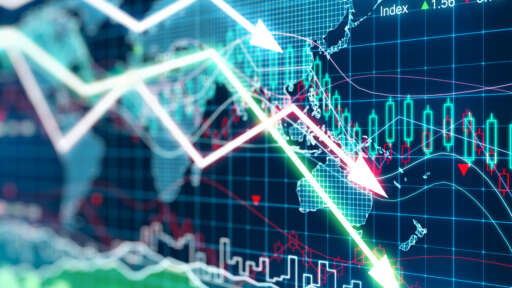
This is the chart, which is spooking US equity markets. The yield on US 10 year Treasury bonds, which fell last August to an all-time low level of 0.52pc has since roughly trebled on fears that a post Covid-19 economic recovery will revive inflation and lead to even higher rates.
I think it is an overrated fear but who really knows. My feeling is that the sheer scale, openness and technology-fuelled power of the 21st century global economy is so potent that inflationary pressures will be absorbed and the economy will continue to grow with low inflation. There is no sign that the exciting shares making up the QV for Shares portfolio will not continue to thrive in this environment and that is what is really driving this bull market.
There will always be ups and downs along the way; that is the nature of stock markets and the downs always have a reason, one which seems overwhelmingly important at the time but as time passes ceases to be a major influence.
It may help to introduce subscribers, who didn’t study economics at university, to a phenomenon known as the yield curve. It plots interest rates at intervals from short term to long term and its shape tells a story about economic prospects. In August 2020, when long bond yields fell to 0.52pc, this compared with a Fed Funds rate (the rate at which the US central bank, the Federal Reserve or Fed, lends to other banks) of 0.25pc.
This meant that the yield curve was very shallow, almost flat. A flat yield curve indicates that future economic activity is expected to be flat or declining. Last August, Covid cases were reviving with a vengeance and expectations for future economic activity were very cautious.
Now we have the vaccine and many observers believe that a dramatic pick-up in economic activity is just a matter of time. The Fed is still keeping short term rates low because these are set by the Fed but long term rates are set by the market and, in reflection of these changing expectations, long rates are rising sharply leading to a steeper yield curve.
A steeper yield curve is a normal state of affairs and not an inevitable sign of rising inflation ahead. However it does raise the so-called opportunity cost of holding shares because now investors are giving up a higher return on bonds by holding shares instead. So some nervousness in markets is entirely understandable.
There is another shape for the yield curve, where it slopes downwards because short rates are higher than long rates. This usually happens at the tail end of a boom, when the bank is acting to restrain over exuberance in the economy. This is far from being the situation presently.
It is incredibly hard to forecast stock market trends but there are some conditions in place that could create a scary period in stock markets. Rising bond yields, huge stimulus hitting a US economy already set for a post-Covid recovery, high values on stocks by historical standards, investors using large amounts of margin debt, interest rates so low the next significant move is likely to be up and investors sitting on large profits after a prolonged bull run.
You could have said nearly all these things for a year now, while shares have been making great progress but something seems to have cracked and nervous markets can fall very quickly.
The good news is that these periods of weakness/ consolidation in markets set the scene for the next advance and the big picture is as bullish as ever – an unfolding technology revolution, a burgeoning Chinese middle class flexing its spending muscles and an incredible choice of exciting companies changing the world. Even sharp sell-offs look like blips eventually but they can be painful at the time.



